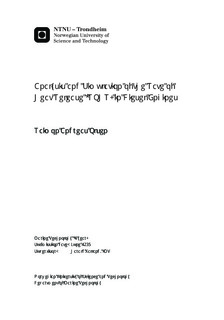Analysis and Simulation of the Rate of Heat Release (ROHR) in Diesel Engines
Master thesis
Permanent lenke
http://hdl.handle.net/11250/238677Utgivelsesdato
2013Metadata
Vis full innførselSamlinger
- Institutt for marin teknikk [3472]
Sammendrag
As the restrictions for emissions from diesel engines are getting stricter, alternative fuels get more attention. Alternative fuels that can be used directly on already existing engines must be investigated to compare their performance with conventional fuels. When analyzing the combustion process in engines it is necessary to take into consideration the thermodynamic properties of the working medium in the cylinder, so that the characterization of combustion becomes more reliable. Using the First Law of Thermodynamics as a foundation two models are constructed for this purpose. The models are tested with measurements done on a test engine and several outputs are presented. The test working points are based on the generator and propeller loading curve, which give 8 measured cylinder pressure traces.Calculation of the speed of combustion (reaction rate) from the pressure measurements gave useful results and the performance of a test engine was calculated based on these. Integration of the reaction rates give the reaction co-ordinates (RCOs) which tells how much fuel that is burned at any time. The calculated RCOs in this case gave results that were partly impossible and the reasons for this were sought. This resulted in indications that errors in the pressure measurement method could be the cause of the partly impossible results.Small fluctuations in the pressure measurements will cause big fluctuations in the calculated reaction rate and thus rate of heat release (ROHR). The reaction rate from raw measurements can be smoothed by the aid of Vibe functions. A smoothing attempt was carried out, but the results were rather poor. The impact of the Vibe parameters is demonstrated. The developed models show results that indicate a good validity.
